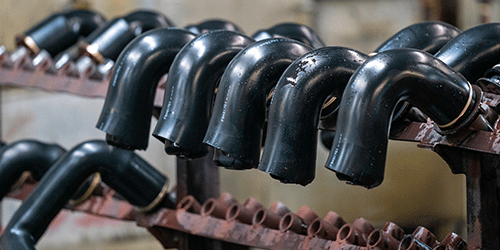Natural Rubber is extracted from the sap of trees, specific trees that are found now in places such as Kerala and Sri Lanka where coconuts are in abundance. It can take as much as almost six years to grow and mature a rubber tree to the point it spews sap. This sap is known as latex which is the raw form of rubber and is usually molten.
The collector makes a thin, diagonal cut to remove a sliver of bark. The milky-white latex fluid runs out of the bark.
This sap is then used as per requirement to make it harder they introduce it to some intense heat and then cold temperatures. To make it softer they add water to this swill and heat it slowly to ensure the material is soft to touch when cooled. It can even be used to basically coat certain materials that need to be sealed or even waterproofed. Since rubber has properties that would highlight water resistance it is smart to use it for waterproofing.
Rubber was considered to be a native American discovery and was therefore not used as a novelty even as late as 1770. In 1770, Joseph Priestley became the first person to use rubber to erase pencil marks. He was even the first person to coin the word “rubber” because of how he could “rub” away anything with the “rubber”. The reason rubber was studied so extensively also credits the Chemist Joseph Priestley.
You can see these problems for yourself with a simple rubber pencil eraser. Take that eraser and place it under intense heat for several minutes. The eraser should get very soft and sticky.
Next, do the opposite — place the eraser on ice or in a freezer for several minutes. What do you see? The eraser should get hard and brittle. The same thing happened to early rubber.
It is impossible to imagine the kind of obstacles the early adopters of rubber had to face because the slightest heat would bring about a melting suit or shoes.
It is still considered rather tough to make rubber the same way that is why there are bigger batches and multiple techniques of refining rubber to better suit the need. Sperry and Rice is experienced in handling rubber production as well as development of other such components.
To better understand what your requirements would be regarding the use of rubber in components your need developed, please contact us.
